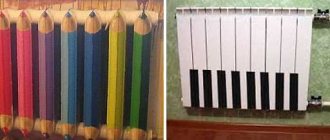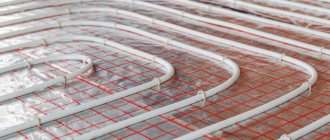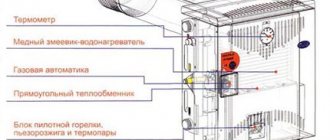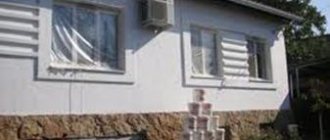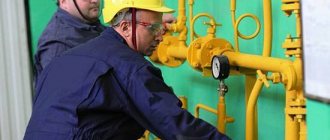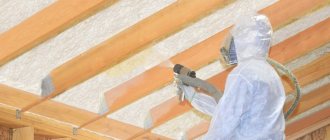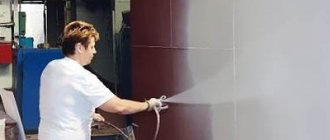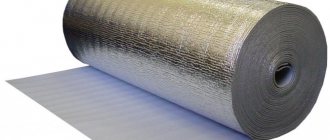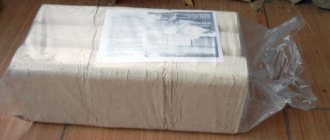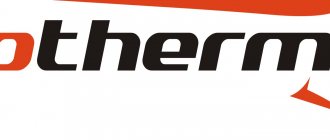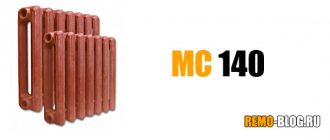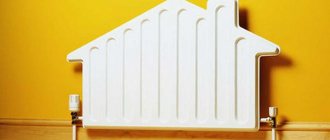Thermal insulation foil
Thermal insulating foil is a building material that consists of several layers. The main elements can be mineral wool, polystyrene foam and interlayers made of thin aluminum film.
Foil insulation is a building material on which an aluminum reflector is fixed on both sides. It is a thin metal film.
Regardless of what material is used for the layer, all types operate on the same principle.
The two outer layers perfectly reflect IR rays, but at the same time have practically zero resistance to heat transfer. Thermal insulating foil passes through itself all the received heat, which falls on the glass wool and is retained.
Thanks to these technical characteristics, the material received the name: insulation with foil.
Always remember, the total resistance to the transfer of received heat depends only on the base of the insulation layer; aluminum foil acts as a reflector of IR rays. Thanks to new technologies, it can be applied to different types of thermal insulation materials.
Manufacturers about reflective thermal insulation
Discussing someone without their presence goes beyond the bounds of decency, so let’s not deprive our opponents of the floor. When advertising their material, they back up what they say with theory and scientific facts. First, a short excursion into the world of the physical properties of infrared radiation.
Infrared rays occupy an intermediate stage between the waves of visible light and microwave radiation. Any heated body emits infrared rays. These rays travel at the speed of light and carry energy that can be reflected or absorbed by a body encountered in their path. The darker the body, the more IR rays it absorbs, and the more it heats up. But the path of the rays does not end there. The heated body itself begins to emit infrared rays more intensely, which in turn will be absorbed or reflected by other bodies.
When we point a thermal imaging camera at a building, we see on the screen a picture of the intensity of infrared radiation emanating from a particular building envelope. The brighter (yellower) the light, the greater the heat loss of a given area. Thus, the conclusion suggests itself: in order to reduce the heat loss of a building, it is necessary to reflect heat inside. Doesn't remind you of anything? That's right - a thermos. By the way, household thermoses with silver-plated flasks appeared more than a hundred years ago, and until recently no one thought that you could paint your home with silver and solve all the problems. But more on that later.
Advantages and disadvantages of insulation with foil
As a result, insulation with foil began to have a large number of advantages: 1. A “thermos” effect is created. This means that in summer the room is relatively cool, and in cold weather it is warm. 2. Thermal insulating foil provides an opportunity to significantly reduce energy costs. 3. Foil is an additional sound insulator. 4. The foil surface prevents the penetration of excess moisture. 5. The material is perfectly installed; this does not require special equipment or specific skills. 6. Available in rolls or panels of standard sizes, which allows transportation by various modes of transport.
The disadvantages include the following points. Firstly, over time, the aluminum layer begins to become cloudy, and the reflectivity decreases significantly. Secondly, the metal layer heats up quite intensely. During installation, a gap should be left, which should be located between the insulation and the final finish. This gap will also prevent drops of moisture from accumulating on the aluminum surface, which will lead to an increase in service life.
Foil as a heating element
Some time ago, domestic consumers had the opportunity to take advantage of another option for heating their homes. We are talking about an infrared heating system, where the base is foil.
In this system, the main element that provides heating is made in the form of a foil on a metal base, having a slight thickness, which is surrounded on both sides by a pair of plastic films.
Features of installing a foil heating system.
The ceiling is the best place to install indoors.
Installation of the system involves placing foil in the space formed by the ceiling covering and insulation. The place where it is secured is the ceiling lathing. This installation option allows heat to spread almost without loss over the entire area of the ceiling covering, and from there it reaches all areas of the room. It is the ceiling that provides heat to the entire room, from where it reaches the floor, walls, and objects. Moreover, there is no heat transfer into the air.
Manufacturers took into account that ceilings in apartments may differ in height, which led to the appearance of two types of foil. The first is universal and can be used in any room, regardless of the characteristics of the ceiling; it is characterized by a power value of 125 W/m. As for the second, it is designed for rooms with high ceilings; it is characterized by a power value of 150 W/m.
To ensure that a comfortable temperature prevails in the house, this system is equipped with a thermostat, which provides data regarding the temperature at a particular time in the room.
Floor - as an alternative to placement
A special feature of such a system is that the floor itself can serve as a place for placing the foil. In this case, its installation is carried out between the floor covering and the insulation. It should be noted that there must be a gap between the surface and the foil. Heating here is carried out in the same way as when using the ceiling version of the system: as a result of an increase in temperature, the foil heats the coating, which ensures the spread of heat to the walls, ceiling and furniture. They also heat the air in the room.
In a situation where only the floor is used for space heating, foil should be used, the dissipating power of which is 90 W/m. You can ensure a comfortable floor temperature using foil, for which the power dissipation value is 60 W/m.
The main advantages of a heating system with foil
Among all the advantages characteristic of a warm ceiling system, the main one should be called low electricity costs. This is made possible thanks to the high heating efficiency demonstrated by infrared radiation in combination with a room heating control system.
In addition to this, it is distinguished by absolute fire safety, as well as low costs and minimal time required for installation, which eliminates the need to install expensive heating mains or gas pipelines.
The foil-based heating system makes it possible to change the heating temperature of the room without any particular difficulties and very quickly.
This heating system makes it possible to use it not only indoors, but also outdoors, heating the items you need. For example, put a warm bench on the open terrace and enjoy the views during cooler times of the day. Foil can help you!
Heat reflector behind the battery
- Effective operation of the heat-reflecting screen behind the radiator can be achieved by simultaneously following the following rules:
- The screen itself should not block the heat transfer path from the battery to the room. There are only two such paths. These are flows of warm air going upward and heat radiation in the infrared range.
- To eliminate the ineffectiveness of heat transfer in the first case, the boxes must structurally ensure unhindered air circulation in the upward direction. To do this, they must have the necessary inputs at the bottom. At the same time, the upper horizontal line should not be continuous.
- To carry out warm air flows, it is worth making heat-reflecting screens with lattice front parts (with the exception of those made of metal).
The heating of an external wall with a fixed battery becomes much less due to the fact that similar screens are mounted between it and the wall.
The principle of operation of the heat-reflecting screen behind the radiator
In most apartments and residential buildings, heating radiators are installed under window openings. The section of the wall behind them is always heated the most intensely. Experts say this part can heat up to 35-40°. Essentially, precious heat is wasted on heating the outer wall of the building instead of making the room temperature higher.
The problem of heat loss can be solved in a simple way - install a heat shield on a section of the wall directly behind the radiator
Even greater heat losses are observed in cases where the radiator is mounted in a niche. It is thinner than the wall surface. This means that cold air penetrates into the rooms in huge quantities through it.
It is undoubtedly impossible to put up with this state of affairs. And it's not necessary. The problem of heat loss can be solved in a simple and elegant way - by installing a heat shield on a section of the wall directly behind the radiator.
The heat-reflecting device we are interested in not only retains heat. It, in addition, protects the batteries from the penetration of dust and moisture particles into them from behind the wall (through small cracks).
Visually, factory-made heat-reflecting screens look attractive. This makes it possible to use them to decorate nondescript areas of the wall behind the heating radiators.
Theoretically, they can be made from any type of reflective material, combining it with a heat-insulating product. The main thing here is to meet one condition. The reflective material must have a minimum (up to 0.05 W/m*°C) thermal conductivity index.
Foil fully meets this condition. But you cannot use it yourself. The foil, which is a metallized product, will have to be attached to the wall. It will heat up and immediately transfer heat to the wall.
Therefore, it is imperative to create a special layer between the wall surface and the foil. Important! The layer should be thicker than the metallized product.
- Let's consider what materials are used for such screens:
- foil;
- penofol;
- Porilex with foil.
It is important! The main thing is that the material from which the reflective screen is made has a low thermal conductivity coefficient, approximately 0.05 W/m*°C.
If you use only foil for these purposes, then you should take into account that this metal heats up and if it has contact with the wall, then all the heat will transfer to it. And to prevent this from happening, it is necessary to make a layer between them (foil and wall), which should be thicker than the foil and have low thermal conductivity.
For this purpose, penofol is used, which is a foam base or Porilex with foil. Moreover, the thickness of the screen should be 3 - 5 mm.
Also, the heat reflector behind the battery can be made from rolled foam. This is a three-millimeter material that is created specifically to redirect heat indoors.
The most common and cheapest material for insulation is polyethylene foam. 4 mm of this material replaces a 10 cm layer of mineral wool. The polyethylene is attached to the wall with an insulating layer, and the side with foil is attached to the heating battery.
- Advantages of a heat-reflecting screen behind the radiator:
- The heat-reflecting element allows you to redirect heat inside the room, rather than heating the exterior walls. Due to this, you can increase the temperature in the room, while saving on heating costs.
- Such radiators can be decorative, that is, thanks to this, nondescript places under the batteries are emphasized.
- Radiators do not become clogged with dust due to suitable cold air from below, and they become easy to clean.
- The main advantage is the supply of warm air into the room, as well as the prevention of moisture penetration.
Foil behind the radiator
A heat-reflecting screen with aluminum foil behind the heating radiator completely insulates the walls from heat, which helps reduce heat loss and increases the efficiency of the heating system by 20%.
A heat-reflecting screen with aluminum foil behind radiators and central heating radiators completely insulates the walls from heat, which helps reduce heat loss and increases the efficiency of the heating system by 20%.
The room temperature rises by 2-3°C. Thermal waterproofing of the roof. Can be used as insulation under heated floors only with polyethylene film (to protect the foil from oxidation in the aggressive environment of cement-sand mortars).
90% of the heat is reflected from the foil, and the thermal insulation layer makes it difficult to lose heat. To achieve the greatest effect and retain heat, you can use double-sided foil, that is, the insulating material will be the middle link, and the outer sides of the material are made of foil, but this is unnecessary.
Such material is secured with glue, but it will be better if there is a layer of air under such a screen that will replace the heat insulator. To do this, use a grid on which a screen sheet is attached, and the thickness of the recommended layer is 10 mm.
By installing foil behind the radiator, near the outer wall, you can increase the air temperature in the room by 2 degrees.
- The foil is installed according to the following rules:
- The thickness of the insulating layer must be at least 5 mm.
- The reflective side of the screen should be facing the battery.
- If the foil does not have a self-adhesive layer, then you can attach it using the staples of a construction stapler.
In addition to reflecting heat, such a screen can perform a vapor barrier function, that is, protect the wall from moisture penetration into it.
The size of such a reflective screen should be larger than the size of the heating radiator. Of course, to install such a screen behind heating radiators, you do not need to contact any company; you can do it yourself.
A heat-reflecting screen with aluminum foil behind radiators and central heating radiators completely insulates the walls from heat, which helps reduce heat loss and increases the efficiency of the heating system by 20%. At the same time, the room temperature rises by 2-3°C.
Thermal waterproofing of the roof. Can be used as insulation under heated floors only with polyethylene film (to protect the foil from oxidation in the aggressive environment of cement-sand mortars).
Heat Reflective Film for Batteries
Thermal reflective film is a rolled material on a woven or non-woven base that reflects infrared radiation towards the source.
First of all, you should decide on the place of its application. So, to create a heat-reflecting screen behind the battery, you need to remember that the thermal conductivity of aluminum is very high.
In order not to heat the wall behind the radiator, but to reflect the heat into the room, there must be an insulating layer between the film and the wall. The ideal choice in this case is films based on polyethylene foam.
Thermal reflective film Ondutis R Termo is perfect for reducing heating costs. Thanks to its characteristics, it provides up to 80% heat reflection. As a result, instead of heating the walls, thermal energy is used exclusively for heating the premises.
The low weight of the Ondutis R Termo vapor barrier (70 m2/g) allows it to be used for insulating light frame structures, and the vapor permeability of up to 10 g/m2 per day provides maximum protection of the insulation from steam, even in a Russian bath. At the same time, the film does not lose its properties when temperature changes from −40 to +120 degrees.
Reflective screen for radiator
Household heating radiators emit a non-directional flow of thermal energy and, at the same time as heating the air in the room, warm up the wall on which they are mounted. By installing a simple heat reflector behind the battery in the area where the battery is suspended, you can significantly reduce heat loss and, with the same energy consumption, raise the room temperature by 2-4 degrees.
The heat reflector screen is ideal for insulating the space behind radiators and radiators, loggias and balconies. This flexible, thin, durable and lightweight material based on aluminum foil has excellent thermal insulation properties.
The principle of operation is very simple - the screen reflects up to 90% of the heat.
You may have noticed that the wall located behind the radiator is always warm. This suggests that the heat from the battery simply goes to nowhere - to heat the street.
For example, such a simple procedure as insulating the area behind the radiator can increase the temperature in the house by 3-6 C, and increase the efficiency of the radiator by up to 42%. Consequently, significantly reduce the cost of heating the premises, be it gas or electricity.
Theoretically, heat shields for radiators can be made by combining any heat-insulating material and reflective foil (for example, polystyrene foam or mineral wool boards).
But at the moment, the most effective and convenient is polyethylene foam with closed air pores, produced in the form of rolls with one-sided or double-sided coating of aluminum foil. The thickness of this material is only 5-10 mm.
Without taking into account the reflective effect, the thermal conductivity of one layer of foamed polyethylene is 0.05 W/m °C. At the same time, the total heat-reflecting efficiency exceeds foam concrete by 12-20 times, mineral wool and expanded polystyrene by 4-12 times.
- The most well-known brands in this product category are: “Penofol”, “Izospan”, “Alumofol”, “Porilex”. All of them are available in three versions, distinguished by the foil method:
- type A: one-sided;
- type B: double-sided;
- type C: single-sided with self-adhesive backing.
What materials are reflectors made of?
Theoretically, they can be made from any type of reflective material, combining it with a heat-insulating product. The main thing here is to meet one condition. The reflective material must have a minimum (up to 0.05 W/m*°C) thermal conductivity index.
Foil fully meets this condition. But you cannot use it yourself. The foil, which is a metallized product, will have to be attached to the wall. It will heat up and immediately transfer heat to the wall.
Therefore, it is imperative to create a special layer between the wall surface and the foil.
Important! The layer should be thicker than the metallized product.
- Most often, the following are used to make a heat insulator:
- rolled foam;
- penofol (foamed polyethylene).
Polystyrene foam in rolls is a cheap material. Moreover, its heat-protective potential is 1.5 times higher than that of the well-known insulator - mineral wool. Foamed polyethylene is 2–2.5 times more effective than mineral wool. It has been proven that 4 mm of penofol provides the same amount of thermal insulation as 10 mm of mineral wool.
You can make your own reflector of the heat coming from the battery. To do this, you need to purchase foil and heat-insulating material separately and fasten them together with tape. But it’s easier to purchase a ready-made heat-reflecting product.
They are produced under well-known brands - Izospan, Porilex, Alumofol, Penofol. It will be easy to choose a product that is suitable for the price.
- Thermal reflective products from different companies differ slightly from each other. Let's consider the possibilities of foil materials using Izospan screens as an example. These products are especially in demand by domestic consumers. The construction market offers several types of Izospan heat-reflecting devices:
- FX. The function of a heat insulator is performed by foamed polyethylene, and the role of a reflective film is played by a lavsan coating.
- F.S. Products with a polypropylene (PP) non-woven base to which a metallized polypropylene film is attached.
- F.D. Analogous to the FS model. But the heat insulator is made of woven PP fabric.
Experts recommend using Izospan FX. It has an affordable price, does not contain toxic and harmful compounds, and does not deform when heated. However, you can use other varieties of Izospan.
Believe me, the effect of using them will be no worse. Let us immediately note that decent performance characteristics are inherent in heat-reflecting films from other manufacturers. There is no need to focus specifically on Izospan.
